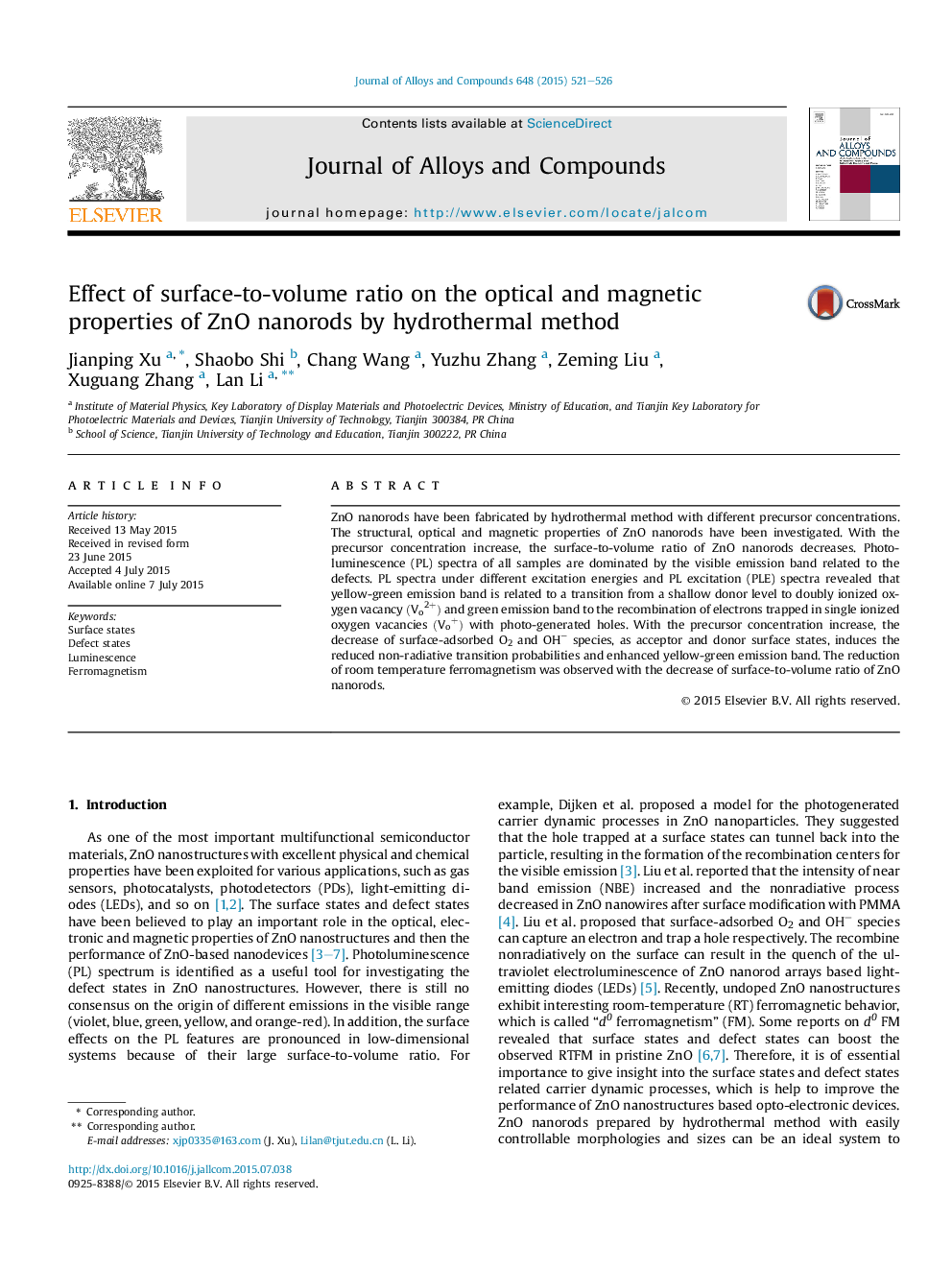| Article ID | Journal | Published Year | Pages | File Type |
|---|---|---|---|---|
| 1608556 | Journal of Alloys and Compounds | 2015 | 6 Pages |
•The surface-to-volume ratio of ZnO nanorods decreases with precursor concentration increase.•The decrease of surface-adsorbed O2 and OH− species induces enhanced yellow-green emission band.•The amount decrease for adsorbed O2 and OH− induces narrow width of ZnO nanorods depletion region.•The decrease of surface-to-volume ratio of ZnO nanorods leads to the reduction of RTFM.
ZnO nanorods have been fabricated by hydrothermal method with different precursor concentrations. The structural, optical and magnetic properties of ZnO nanorods have been investigated. With the precursor concentration increase, the surface-to-volume ratio of ZnO nanorods decreases. Photoluminescence (PL) spectra of all samples are dominated by the visible emission band related to the defects. PL spectra under different excitation energies and PL excitation (PLE) spectra revealed that yellow-green emission band is related to a transition from a shallow donor level to doubly ionized oxygen vacancy (Vo2+)(Vo2+) and green emission band to the recombination of electrons trapped in single ionized oxygen vacancies (Vo+)(Vo+) with photo-generated holes. With the precursor concentration increase, the decrease of surface-adsorbed O2 and OH− species, as acceptor and donor surface states, induces the reduced non-radiative transition probabilities and enhanced yellow-green emission band. The reduction of room temperature ferromagnetism was observed with the decrease of surface-to-volume ratio of ZnO nanorods.
Graphical abstractFigure optionsDownload full-size imageDownload as PowerPoint slide
